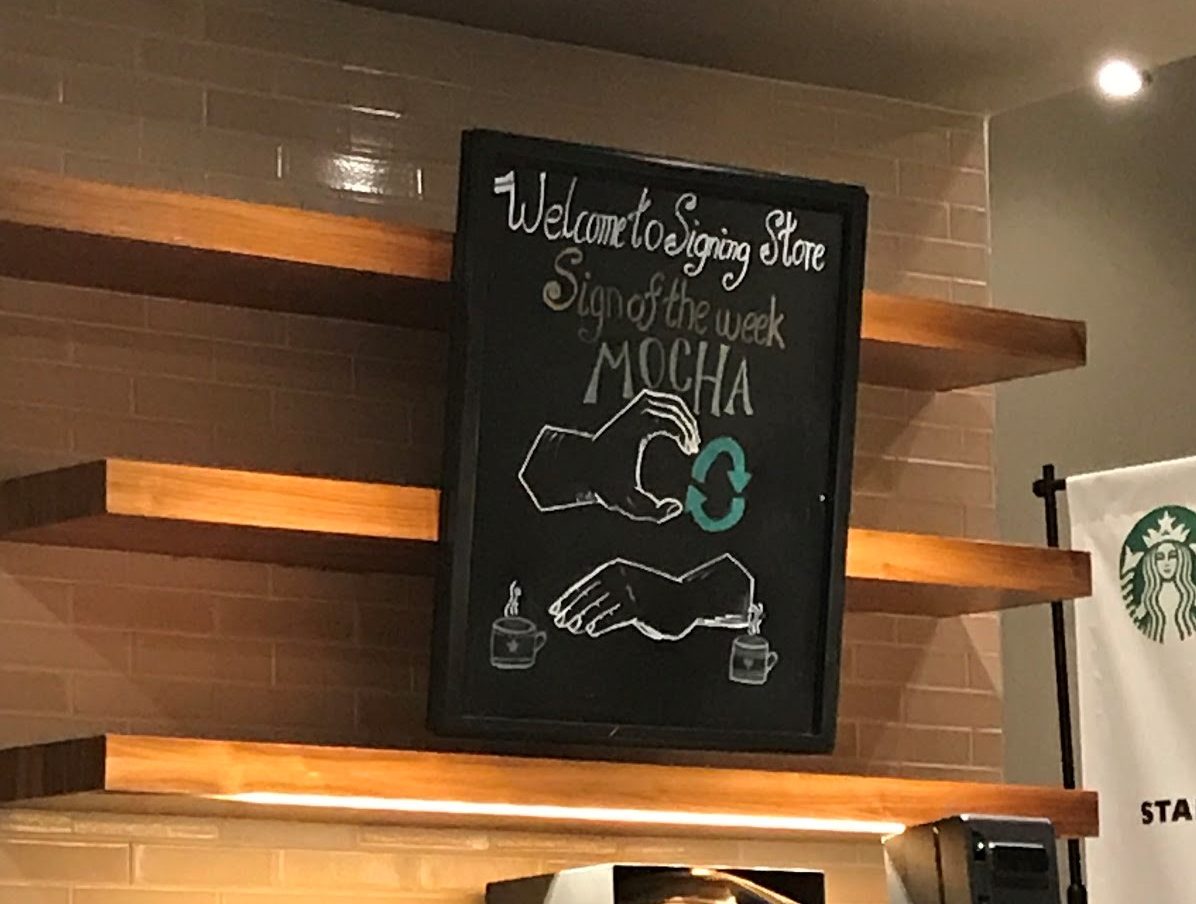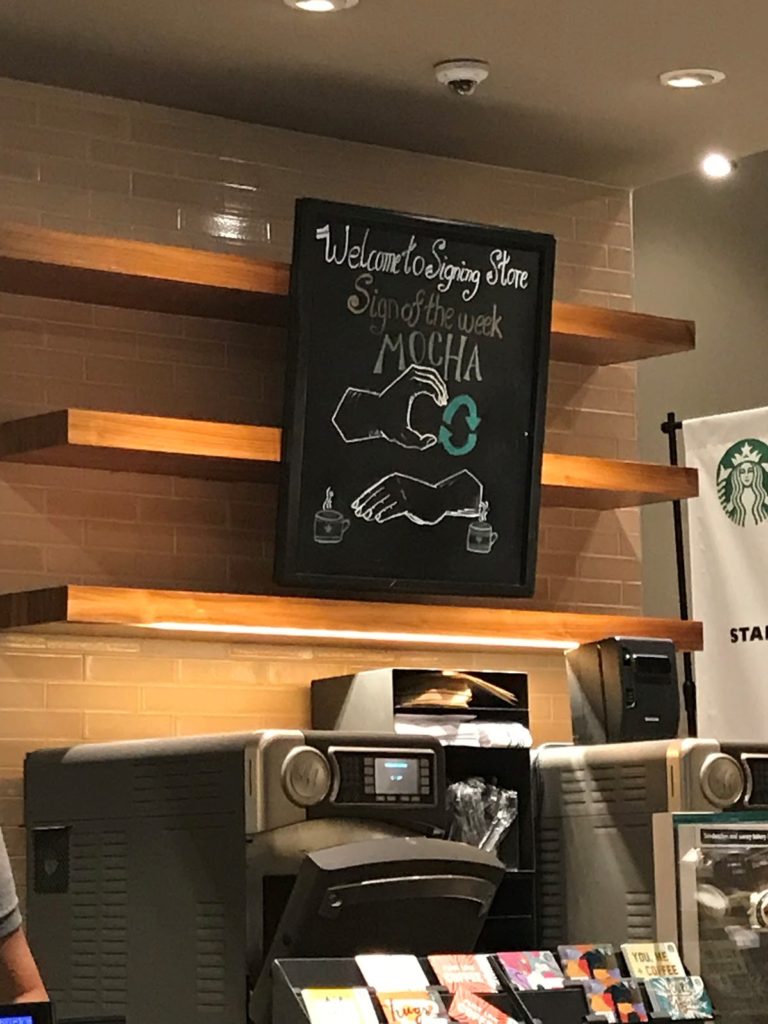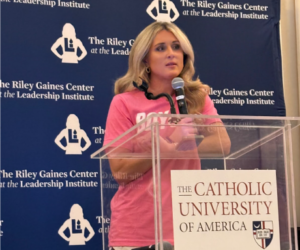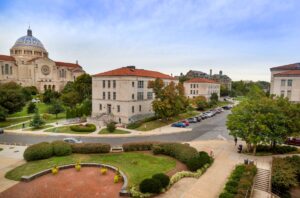First Signing Starbucks Opens In D.C.

Signage in D.C.'s first Starbucks "signing store". Courtesy of Catherine O'Grady

By Catherine O’Grady
The Starbucks at 625 H Street NE is unlike any other Starbucks in the country. As of October 23, this Starbucks location became the first American Sign Language (ASL) Starbucks in the United States, with all employees being fluent in ASL.
When walking through the doors, customers are not greeted with the familiar Starbucks sound of coffee shop music. When customers walk through the front doors of this Starbucks they will hear no coffeehouse music. Customers will find the store more visually stimulating, with brighter lights, more colorful murals, and posters displaying hand gestures. The baristas use a gesture greeting instead of greeting customers verbally.
This Starbucks was converted over to a Signing Starbucks to engage the Deaf and hearing impaired community in Washington, D.C. This follows in the footsteps of a Starbucks in Malaysia that opened a similar Starbucks “Signing Store” in 2016. The coffee shop is located near Gallaudet University, a federally chartered private university for the education of the Deaf and hard of hearing located in Northeast D.C.
“This is a historic moment in Starbucks’ ongoing journey to connect with the Deaf and hard of hearing community, hire and engage Deaf and hard of hearing partners, and continue to find ways to be more inclusive, accessible and welcoming to all,” said Rossann William, the Executive Vice President of Starbucks said in a press release.
People who are deaf or hard of hearing are more likely to face discrimination in the workplace as a result of the language barrier. This Starbucks location creates job opportunities for the Deaf and hearing impaired and creates an inclusive community.
The baristas are eager to communicate with people in nonverbal ways and even teach customers words or phrases in ASL.
Although most of the baristas are hearing impaired or deaf, some employees are not but chose to avoid speaking at work which contributes to the general atmosphere. This is one of the few places hearing people can try to understand what it like to live life with a language barrier.
To combat this language barrier, this location provides tablets to write down your order and TV screens display your name when your order is ready.
As the first of it’s kind in the United States, this Starbucks has gained national attention. With the success it has had so far, it is likely the U.S. will see more Starbucks like this one.







